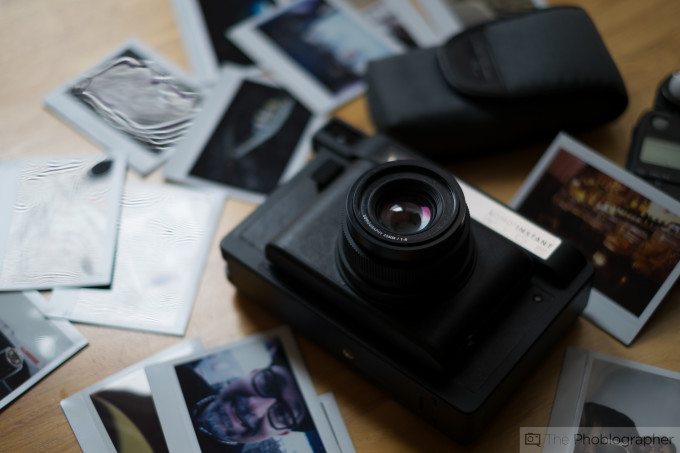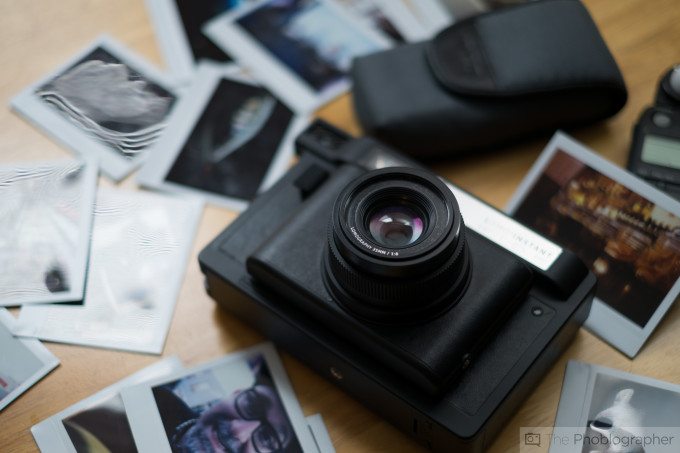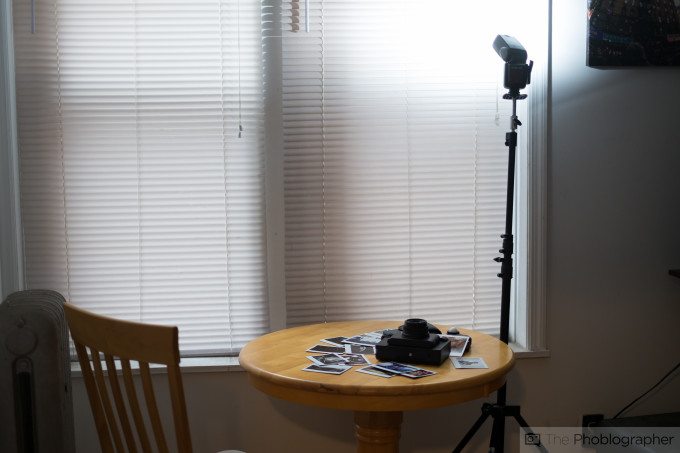Last Updated on 12/09/2015 by Chris Gampat
This morning, I was shooting the product images for the review of the Lomography Lomo’Instant Wide camera. As you can see in the setup, the camera is on a table surrounded by many images that it has shot. Additionally, we’ve got lots of light being diffused from the shades and there is a light stand next to the table. That light stand has a flash on it set to its widest zoom head and is bouncing light off of the shade–therefore enhancing the look of the natural light.
It’s just a little bit of light but as you’ll see after the jump, it does quite a bit more for the image.

To start off, this image above is created when the flash is turned off. It’s a nice photo, but lots of it is shrouded in darkness. I’m shooting at such a low ISO to get as much detail as I can from the image. Shooting at f1.4 is a genuine creative choice to get the lens in focus and have some depth of field in the photo to give readers a hint of what can be done with the camera. But the overall focus is still on the product.

Notice what happens when a flash is added to the scene. We’ve got all those shadows now opened up and if I didn’t tell you, most people would probably think that the image was shot with all natural light. We still have shadows in the image, but they’re just enough to give the image extra contrast and draw the viewer’s eye into the camera overall.
Notice how the flash is soft enough to give a sense of really diffused lighting only coming from the outside. The reason for this has to do with the placement of the flash. The Adorama Flashpoint Zoom Li-On flash was placed very high up and set to a wide zoom function. This way it covered the most surface area and it minimized reflections because the light is even more indirect than keeping the flash close down to the entire scene. Remember: the larger the light source, the softer the light! And in order to minimize reflections from that light, you need to make it as indirect as possible.
If I slowed the shutter speed down even more or raised the ISO, I wouldn’t get the same results. The reason for that is because it would make the entire scene more sensitive to light so everything would be brighter instead of just that one area–which is really needed. It’s true: you can’t create light that not there, you need to add it. By adding in that little bit of flash, I had exactly what I wanted.
Now this isn’t at all exclusive to just the Fujifilm X Pro 1 and 35mm f1.4 R. If you did it with any camera, lens or flash, you’d get similar results.
If you’re interested in learning more about how product images like these are created, here’s a write up.


